Inclusive private education, Thailand
Sorayot Phanayanggoor
Inclusive education is not widely known or practised in Thailand. Many people still believe that children with special educational needs should be educated in a special setting. There are a few examples of schools which are developing their own inclusive practices and initiatives, without centralised government support. This is the case in one private nursery and primary school in northern Bangkok. The school has been practising inclusive education for many years, without realising that its work fits under the inclusive education label. This article looks at the school’s approach to education for a diverse range of children. It also explains how photography has been used to help pupil express their views about the school, in order to help the school improve.
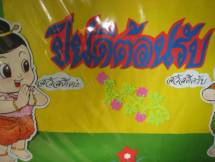
The school is called Settabutr Upathum School and has around 1,000 pupils. It has an almost open admissions policy, though not a fully open policy because it is, after all, a privately run school. However, fee-paying primary schools in Thailand (especially Bangkok) are very common and the fees are capped at an affordable level by the Ministry of Education. So while one might argue that private schools cannot be fully inclusive, such schools should also be judged within their national and local contexts.
The school is situated in a lower-middle class area of Bangkok, where most of the pupils live locally and can just about afford the school fee. The school does the best it can for every child who enrols. Many children with special educational needs, who might have been rejected by or asked to leave other schools, are given the opportunity to be educated in a mainstream setting.
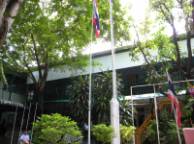
None of the staff are specialists (these are hard to find and tend to stay within special education). Neither are they trained in inclusive education. But the staff have worked collaboratively through years of experience in a mainstream setting. They continuously collaborate through weekly meetings and termly reviews to provide the best possible education for all pupils. While no teacher at the school can be totally sure that what they are doing is the ‘right’ way, feedback from previous pupils suggests the school has done a good job in providing education for these local children.
The school has had to overcome many internal and external obstacles since it opened enrolment to children with special educational needs. Problems have included poor staff attitudes towards these children. There has also been the challenge of parents who did not understand the benefits of inclusive education. Nevertheless, everyone at the school now strives for inclusive education so that no child misses out on the education they deserve.
As part of the process of helping the school to keep reflecting on its practices and strive for continuous improvement, I carried out a small participatory photography project with some of the pupils.
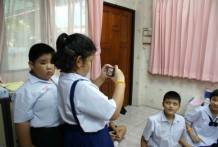
Their views confirmed to me that strong leadership plays an important part in the success of inclusive education. One of the photos, taken by an autistic boy, shows the front door of the school principal’s house. He explained, “That’s the principalss house and she gave me the opportunity to study here so I am very grateful.” This view was backed up by comments from parents of children with special educational needs who are also grateful that their children have been given an opportunity to study by the school management.
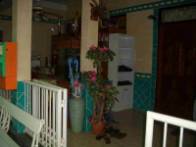
The photography project gave children an opportunity to voice their opinions about the school. Some children engaged less well with the activity, maybe because they were not familiar with this way of working. Nevertheless children expressed views and opinions which are not usually counted or heard much in Thai culture. The activity enabled them to explore their creativity and think critically about their school.
This project has already resulted in the school taking on board some of the children’s comments and trying to make appropriate improvements. For example, one group expressed concerns about the positioning of the school’s recycling bins. They felt that pupils would use them more if they were placed somewhere more accessible and visible. This issue has now been passed on to the Student Council for further actions.
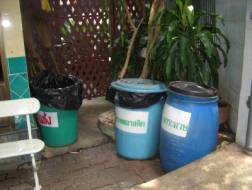
Another group said they appreciate the influence of having two religions (Buddhism and Catholicism) taught at the school. They felt both religions teach them to be calm and thoughtful towards others, which provides an inclusive environment.
A third group of children commented on one of the parties standing for election to the School Council. They would vote for that party “because it has a good policy”.
I feel this type of photography project really can help to promote ‘student voice’ more effectively (although success can depend on the instructions given – my instructions perhaps could be improved!). I think in this school the results may have been different if the activity had been done by a member of the school staff. I think pupils may have been more scared to express critical views, in order to avoid negative reactions from the staff.
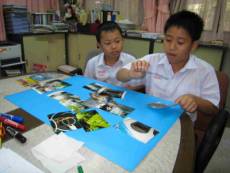
I would like to invite discussions about private schools and inclusive education. Do you think fee paying schools can be inclusive? How effective can privately initiated inclusive schooling be without central support from the government? Can participatory photography be successfully applied within an authoritarian education system?
Sorayot Phanayanggoor (known as Gong) is an MEd student of Inclusive Education at the University of Manchester. He plans to return to Thailand to promote inclusive education, after gaining more experience as a teaching assistant in a Manchester primary school. He can be contacted atsorayot@yahoo.co.uk or via EENET’s postal address. The school website is: www.stbu.ac.th.
